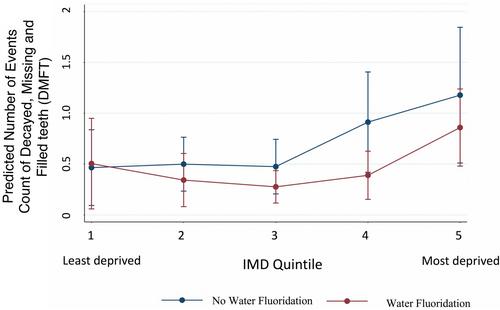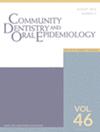The CATFISH study: An evaluation of a water fluoridation program in Cumbria, UK
Abstract
Objectives
The objective was to assess the effectiveness of a Water Fluoridation program on a contemporary population of children.
Methods
The study used a longitudinal prospective cohort design.
In Cumbria, England, two groups of children were recruited and observed over a period of 5–6 years. The Birth Cohort consisted of families recruited from two hospitals in Cumbria where children were conceived after water fluoridation was reintroduced. The systemic and topical effects of community water fluoridation were evaluated in the Birth Cohort. The Older Cohort were approximately 5 years old and recruited from primary schools in Cumbria, shortly after water fluoridation was reintroduced. The predominantly topical effects of fluoridated water were evaluated in the Older Cohort.
The primary outcome was the proportion of children with clinical evidence of caries experience in their primary (Birth Cohort) or permanent teeth (Older Cohort). Unadjusted and adjusted regression models were used for analysis.
Results
The final clinical examinations for the Birth Cohort involved 1444 participants (mean age 4.8 years), where 17.4% of children in the intervention group were found to have caries experience, compared to 21.4% in the control group. A beneficial effect of water fluoridation was observed adjusting for deprivation (a socioeconomic measure), sex, and age, (adjusted odds ratio 0.74 95% CI 0.55 to 0.98). The final Older Cohort clinical examinations involved 1192 participants (mean age 10.8 years) where 19.1% of children in the intervention group were found to have caries experience compared to 21.9% in the control group (adjusted odds ratio 0.80, 95% CI 0.58 to 1.09). For both the Birth Cohort and Older Cohort there was evidence of a beneficial effect on dmft/DMFT count (IRR 0.61, 95% CI 0.44, 0.86) and (IRR 0.69, 95% CI 0.52, 0.93) respectively. No conclusive proof was found to indicate that the effectiveness of water fluoridation differed across area deprivation quintiles.
Conclusions
In the contemporary context of lower caries levels and widespread use of fluoride toothpaste, the impact of water fluoridation on the prevalence of caries was smaller than previous studies have reported. It is important to consider the clinical importance of the absolute reduction in caries prevalence against the use of other dental caries preventive measures.


 求助内容:
求助内容: 应助结果提醒方式:
应助结果提醒方式:


